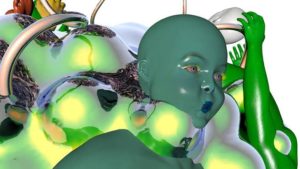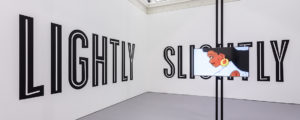The latest group show at Fine Art Society Contemporary, The Materiality of Paint, showcases a number of artists stretching the concept of ‘painting’ to its furthest boundaries.
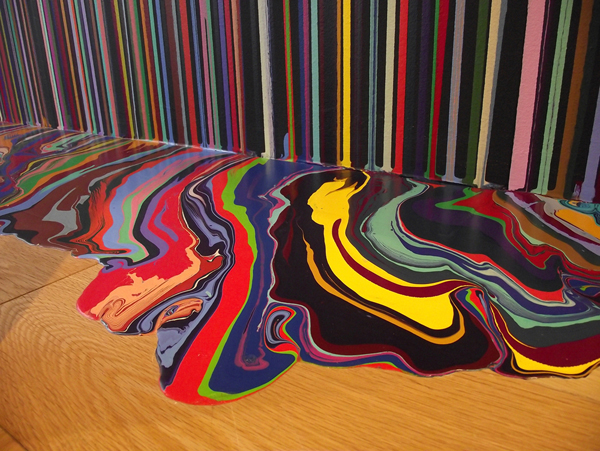
Pegged as the most orthodox artist, Matthew Radford’s ghostly crowd scenes produce a disconcerting distancing effect in the viewer by employing Gerhard Richter-like tactics. The image is scraped and blurred, while further layers, splattering washes of black and white gloss, turn the works into an examination of method as much as the content. It’s an interest shared by Melanie Comber, where the possibilities are thrown up by the layering of paint. The mottled lunar landscapes of ‘Spout’ and ‘Vent’ revealing a surprising depth on closer inspection. Brighter colours drift in and out of focus, swamped by a monochromatic fog.
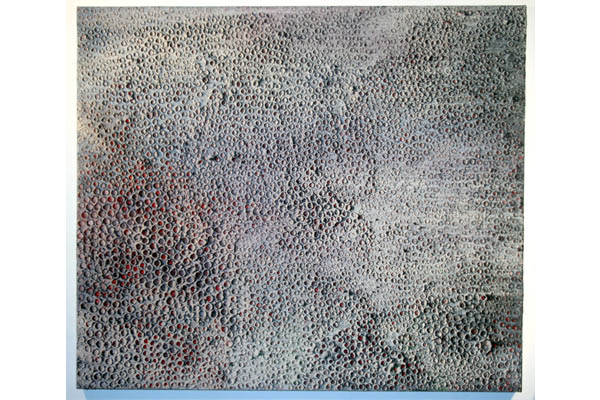
Boo Ritson, on the other hand, could be termed a figurative painter, a portraitist even. But her work reverses the traditional portrait process. Applying the paint directly onto the human body, they become not subject but object, the subject being an imaginary third party (‘The Trucker’). The technique raises some interesting questions – who is this picture of? A creation of the artist? A ‘character’ being performed by the model? To what extent are all portraits self-portraits?
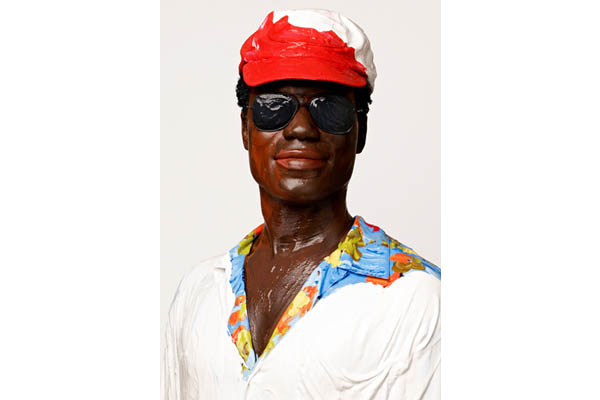
Where Ritson’s piece suggests a whole host of disciplines, Piers Secunda instead forces paint to conform wholly to one, casting the paint itself to create both enormously complex Chinese puzzle balls, and more overtly political casts of the bullet holes left by Taliban gunfire. Secunda himself identifies these works as paintings. Once one becomes aware of this, the ‘paintings’ assume an odd immediacy where object and subject become one and the same. Jason Martin also examines the sculptural possibilities of painting, bold constructs of intense pigment on cast aluminium. Referencing mid-twentieth century movements (and, post-Yves Klein, painting anything blue surely becomes a loaded gesture), these are works with an hypnotic intensity.
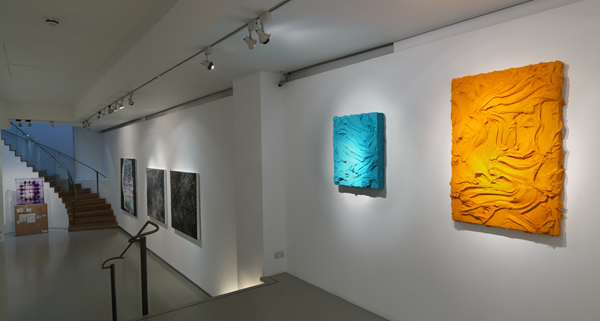
The series of ‘Unconscious Paintings’ by Rob and Nick Carter are an engaging pseudo-Dadaist jape. Blank canvases, rigged with bottles of paint, are posted to sundry venerable art institutions, addressed in such a way to guarantee a return to sender. It is only during transit that the paintings create themselves, every shake and knock causing the paint to find its home on the surface. They all turn out surprisingly uniform, rough-hewn minimalist compositions. Perhaps this is a testament to postmen worldwide treating fragile deliveries with uniform indifference.

Ian Davenport, also, creates a form of automatic painting, although his is the more refined system. In the site-specific ‘Wall Painting’, painted into the window display of the gallery itself, poured lines follow gravity’s instructions, a phalanx of multi-coloured bars from ceiling to floor. Hitting the ground, the colours never mix, as if each line is seeking its own escape from the prison of the picture frame. It’s an opposite description for this exhibition as a whole, wherein painting as a medium denies any limitations.
The Materiality of Paint runs at The Fine Art Society Contemporary until September 29, 2012.

